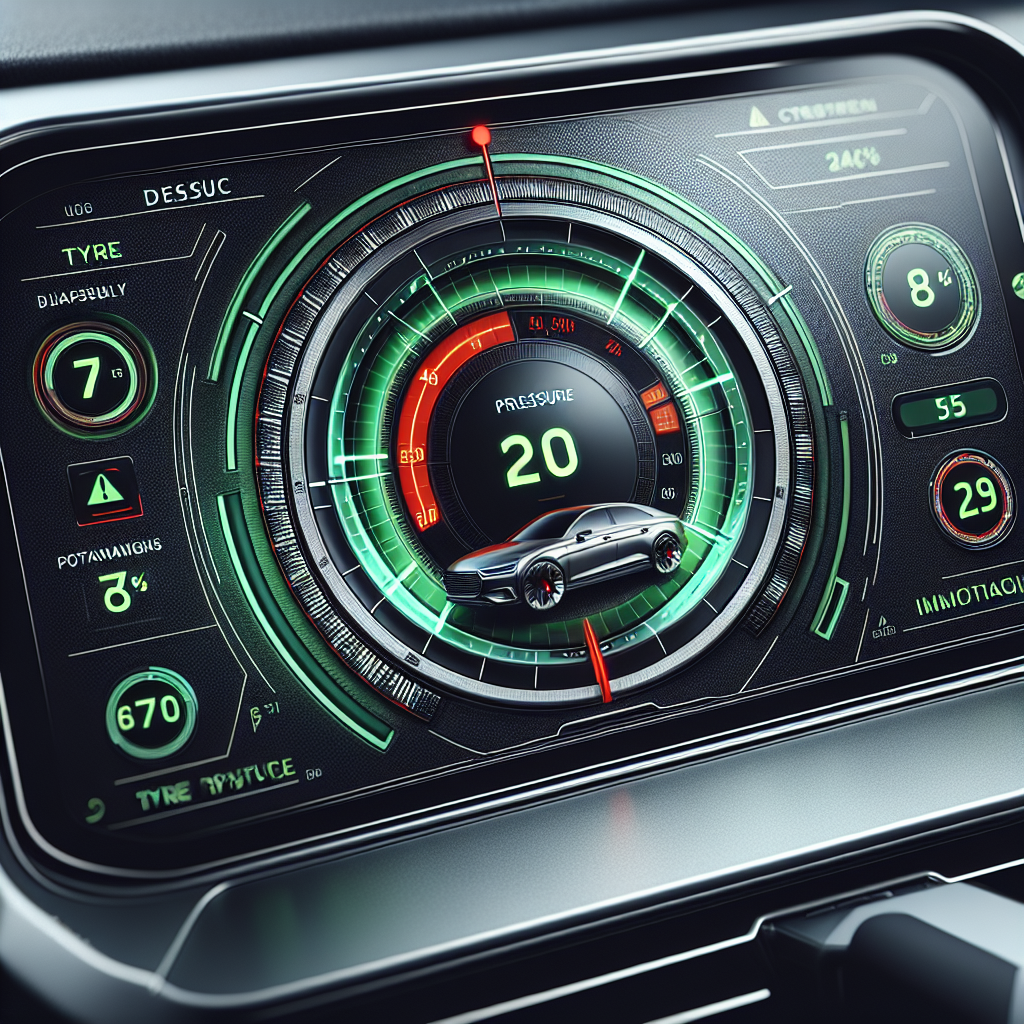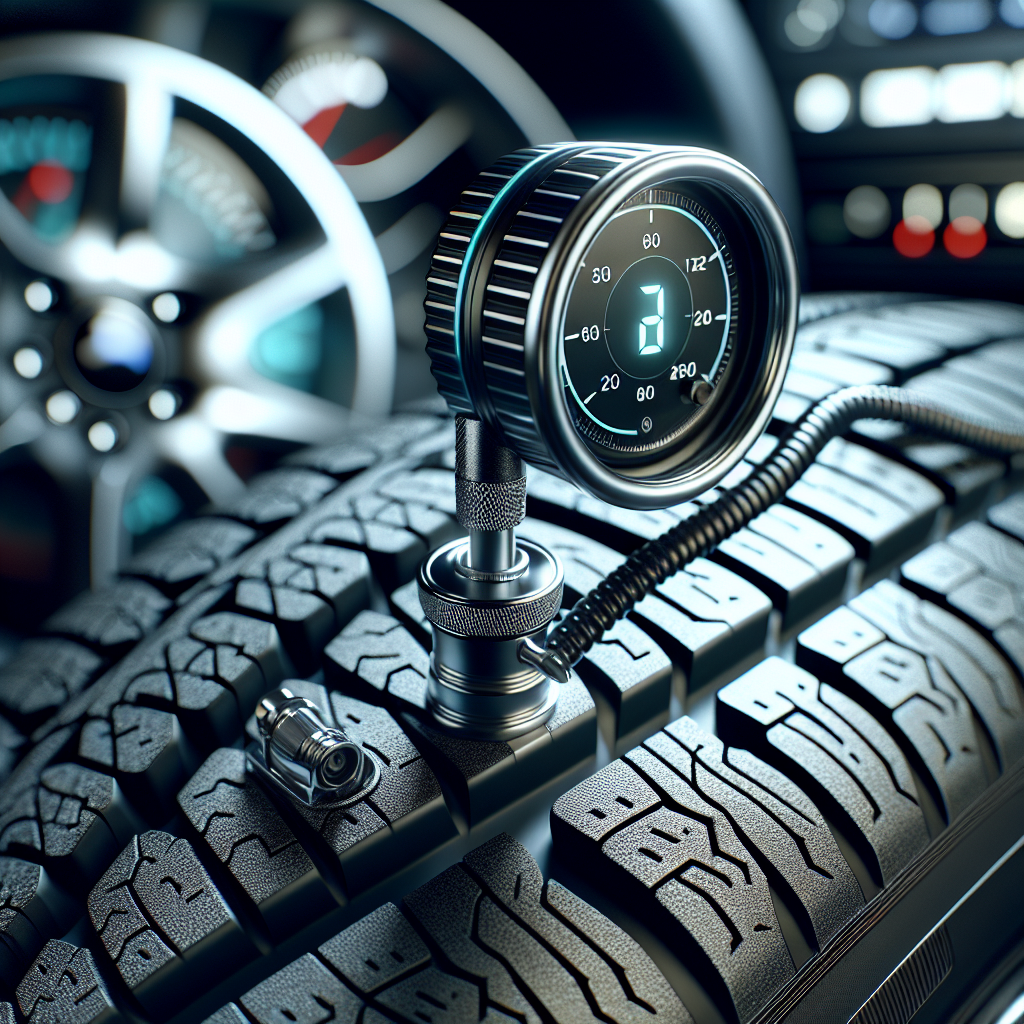In the realm of vehicle safety, tyre pressure monitors play a crucial role in ensuring optimal performance on the road. These advanced systems are designed to continuously track and report the air pressure within your vehicle's tyres, providing real-time data that can help prevent dangerous driving conditions. Understanding how tyre pressure monitors work is essential for any vehicle owner who values safety and efficiency.
Tyre pressure monitors operate using a network of sensors that are either mounted inside the tyre or attached externally. These sensors measure the air pressure and temperature of each tyre, sending this data to a central unit that displays the information on the dashboard. Key features of tyre pressure monitoring systems (TPMS) include:
- Real-time monitoring: Constant updates on tyre pressure help drivers make informed decisions, reducing the risk of under-inflation or over-inflation.
- Alerts and warnings: If tyre pressure falls below a safe threshold, the system triggers alerts, allowing drivers to take necessary actions quickly.
- Enhanced fuel efficiency: Properly inflated tyres contribute to better fuel economy, making your vehicle more cost-effective to operate.
By integrating these systems, any trailer can be transformed into a smart trailer, enhancing safety and performance significantly. Tow with peace of mind, knowing that trailerwatchdog is standing guard.
Understanding the Components of Tyre Pressure Monitoring Systems

To fully grasp how tyre pressure monitors work, it's essential to understand the individual components that make up these sophisticated systems. A typical tyre pressure monitoring system (TPMS) consists of several key elements, each contributing to its overall functionality and effectiveness.
1. Pressure Sensors: These sensors are the heart of the system, typically located inside the tyre. They continuously measure the air pressure and temperature, ensuring that any fluctuations are immediately detected. Some systems use a direct method with sensors mounted on the tyre valves, while others utilize an indirect method that monitors wheel speed.
2. Control Module: The control module acts as the brain of the TPMS. It receives data from the pressure sensors, processes the information, and determines whether the tyre pressure is within the acceptable range. If it detects a significant drop in pressure, it triggers alerts for the driver.
3. Display Unit: This component is typically located on the vehicle's dashboard, providing the driver with real-time information about tyre pressure levels. Some advanced systems also offer features like graphical displays and historical data tracking.
4. Power Source: Most TPMS components are powered by batteries, which are often integrated within the sensors. It's crucial to monitor the battery life to ensure the system operates efficiently.
By understanding these components, vehicle owners can appreciate the technology behind tyre pressure monitoring systems and their significance in maintaining safety and performance on the road.
How Tyre Pressure Monitors Measure Pressure

The process of how tyre pressure monitors measure pressure is both intricate and fascinating, relying on advanced technology to ensure accurate readings. The primary methods utilized in tyre pressure monitoring systems (TPMS) can be categorized into two types: direct and indirect measurement.
1. Direct Measurement: This method involves the use of pressure sensors that are installed inside each tyre. These sensors continuously monitor the air pressure and temperature. When the tyre pressure deviates from predefined levels, the sensor detects the change and sends a signal to the vehicle's control module. The readings are then relayed to the display unit, allowing the driver to see real-time pressure levels. Direct measurement systems are known for their accuracy and ability to provide immediate alerts in case of pressure loss.
2. Indirect Measurement: Unlike direct systems, indirect TPMS does not rely on sensors within the tyres. Instead, it uses data from the vehicle's anti-lock braking system (ABS) to monitor wheel speed. When a tyre is under-inflated, it has a smaller diameter and rotates at a different speed compared to properly inflated tyres. The control module analyzes this data and determines if any tyre pressure is below the acceptable threshold. While indirect systems are less accurate than direct sensors, they are easier and cheaper to install.
Both methods serve a vital purpose in enhancing driving safety by ensuring that drivers are aware of their tyre conditions. By understanding these measurement techniques, drivers can better appreciate the importance of maintaining optimal tyre pressure for safety and performance.
The Role of Tyre Pressure Monitors in Vehicle Safety
Tyre pressure monitors play a critical role in enhancing vehicle safety, making them essential components in modern automotive technology. Maintaining the correct tyre pressure is not just a matter of performance; it is a significant factor in ensuring the safety of both the vehicle and its occupants.
Under-inflated tyres can lead to a range of dangerous scenarios, including:
- Reduced Traction: Insufficient air pressure can decrease the contact area between the tyre and the road, impairing the vehicle's grip and handling, especially in adverse weather conditions.
- Increased Stopping Distance: Tyres that are not properly inflated require more distance to come to a complete stop. This can be critical in emergency situations where every second counts.
- Tyre Blowouts: Low tyre pressure increases the risk of blowouts, which can lead to loss of control, accidents, and potential injuries.
Tyre pressure monitors work continuously to ensure that drivers are alerted to any significant changes in tyre pressure, thus allowing for timely interventions. This ability to monitor real-time tyre conditions empowers drivers to make informed decisions, such as when to inflate their tyres or when to seek professional assistance.
Moreover, tyre pressure monitors contribute to fuel efficiency by ensuring that tyres remain within optimal inflation levels. Properly inflated tyres reduce rolling resistance, leading to better fuel economy and lower emissions. This not only benefits the driver’s wallet but also supports environmental sustainability.
Benefits of Using Tyre Pressure Monitoring Systems

Implementing a Tyre Pressure Monitoring System (TPMS) presents numerous advantages that extend beyond mere convenience. These systems are designed to proactively enhance vehicle performance and safety, offering a range of benefits for drivers and fleet operators alike.
Some of the key benefits of using tyre pressure monitoring systems include:
- Enhanced Safety: By continuously monitoring tyre pressure, TPMS provides real-time alerts about any deviations from the recommended levels, significantly reducing the risk of tyre-related accidents.
- Improved Fuel Efficiency: Maintaining optimal tyre pressure ensures that your vehicle operates efficiently. Under-inflated tyres increase rolling resistance, leading to higher fuel consumption. TPMS helps keep tyres properly inflated, which can result in notable savings at the pump.
- Extended Tyre Life: Properly inflated tyres wear more evenly and last longer. By using a TPMS, drivers can avoid uneven wear patterns, reducing the frequency of tyre replacements and associated costs.
- Time and Cost Savings: By preventing issues before they escalate, TPMS can save drivers from costly repairs and downtime. Regular maintenance becomes easier as drivers are alerted to tyre issues early.
- Environmental Benefits: Efficient tyre management through TPMS contributes to lower carbon emissions as vehicles consume less fuel and produce fewer pollutants, aligning with global sustainability goals.
Incorporating a tyre pressure monitoring system into your vehicle not only enhances safety but also promotes long-term savings and environmental responsibility. With these systems in place, drivers can enjoy peace of mind knowing they are actively contributing to their vehicle's performance and safety.
Conclusion: Importance of Regular Tyre Pressure Monitoring

Regular tyre pressure monitoring is an essential practice for any vehicle owner. The significance of maintaining the correct tyre pressure cannot be overstated, as it plays a vital role in ensuring overall vehicle safety, performance, and efficiency. Neglecting tyre pressure can lead to dangerous situations, including blowouts, decreased traction, and compromised handling.
Moreover, monitoring tyre pressure regularly helps in optimizing fuel consumption and prolonging the life of your tyres, which translates to cost savings over time. By being proactive with tyre maintenance, drivers can avoid unexpected repairs and reduce their environmental footprint through improved fuel efficiency.
In today’s fast-paced world, utilizing technology such as a Tyre Pressure Monitoring System (TPMS) can simplify this process and provide peace of mind. These systems offer real-time data, allowing drivers to stay informed about their tyre condition effortlessly.
Tow with peace of mind, knowing that trailerwatchdog is standing guard.








